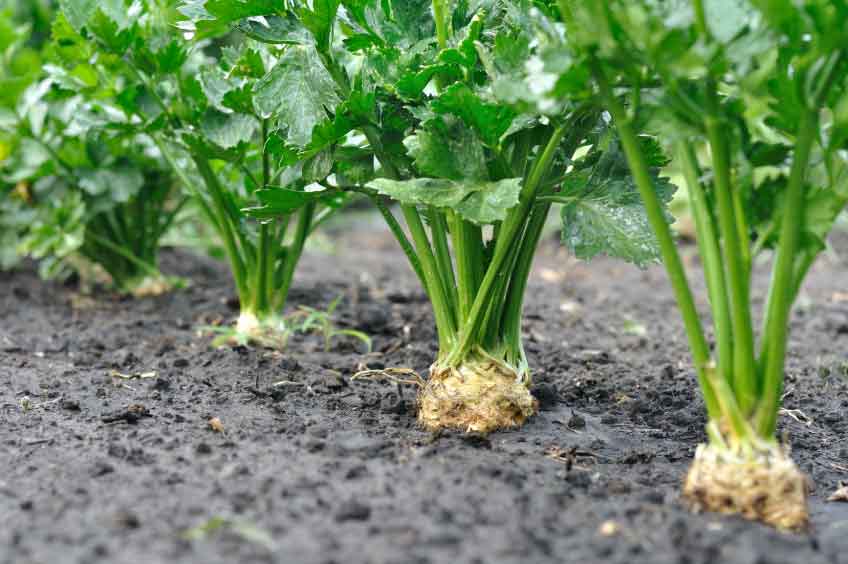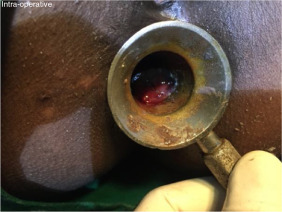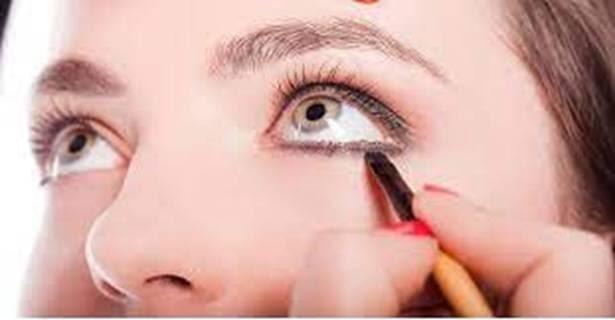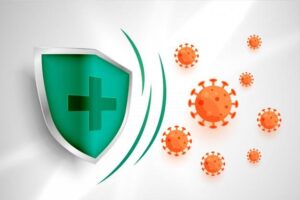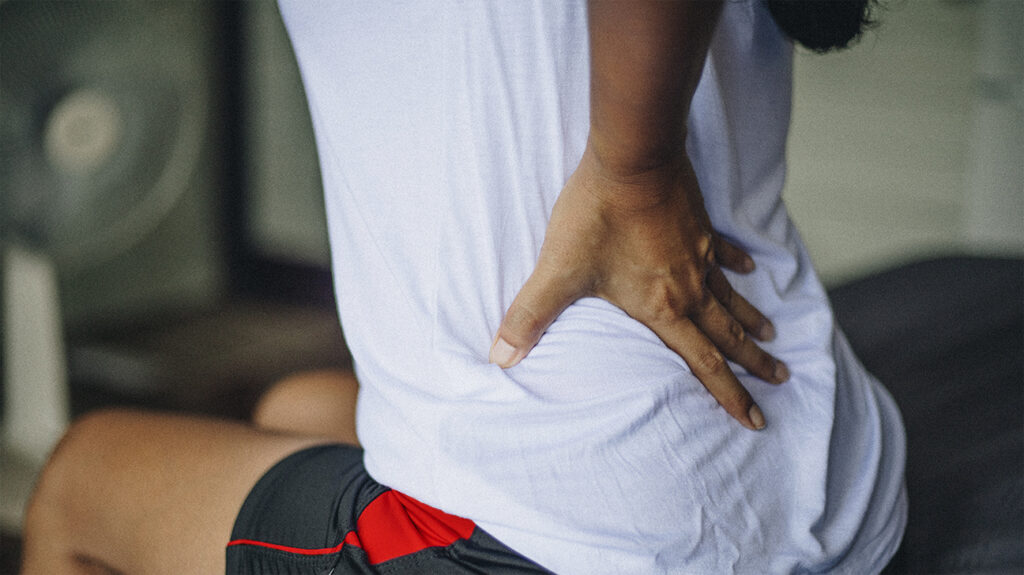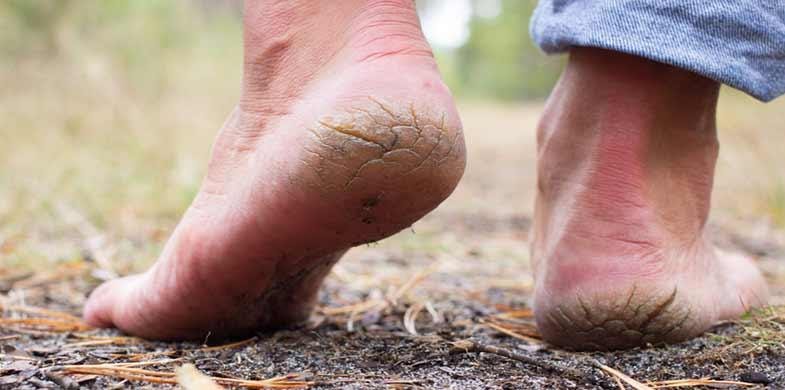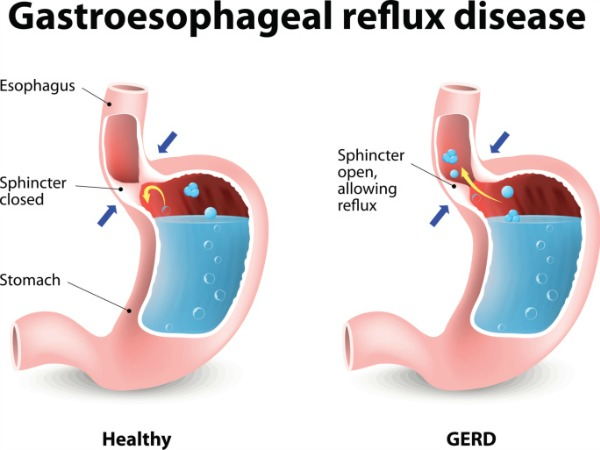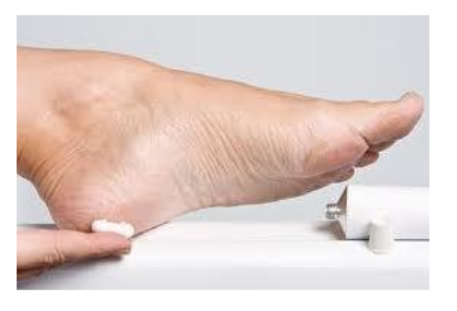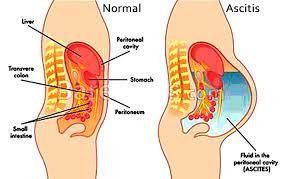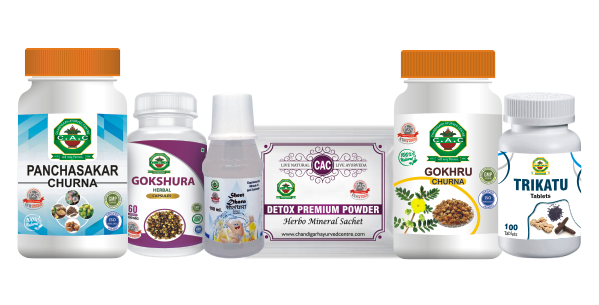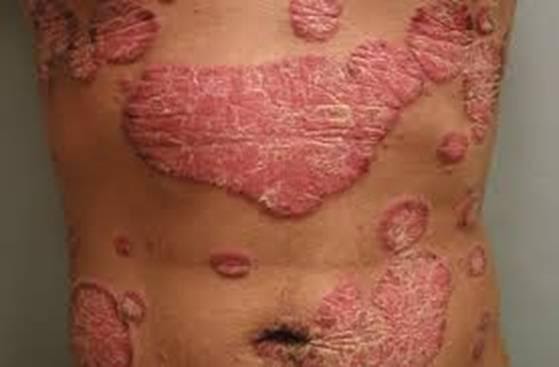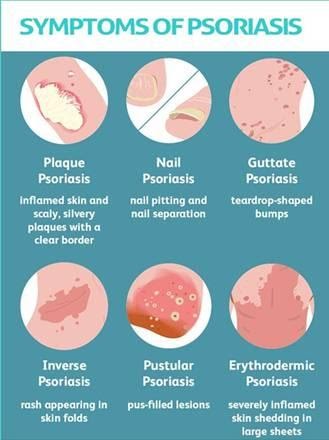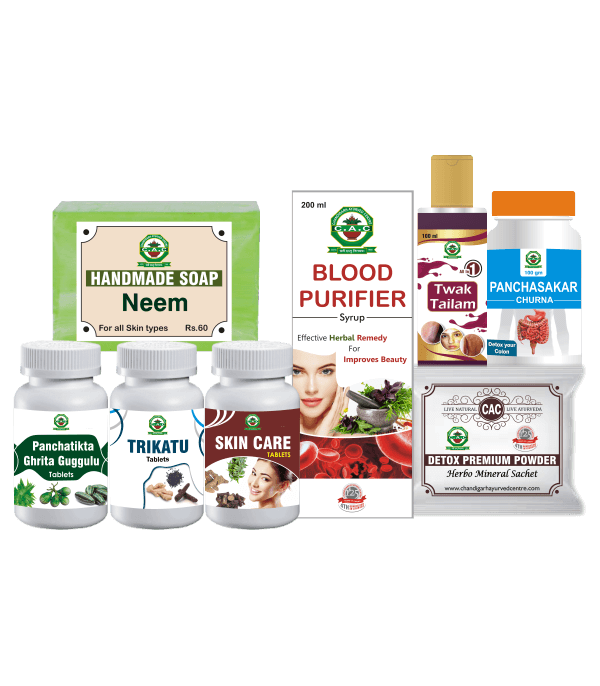Author Archives: Dr. Vaidya Karanvir Singh
Ajmoda
- April 22, 2021
- Posted by Dr. Vaidya Karanvir Singh
- 0 Comment(s)
Description
- Ajmoda or Celery seed is a popular Ayurvedic medicinal herb worldwide. It consists of the dried seeds obtained from the herbal plant Apium leptophyllum, Apium graveolens, and Trachyspermum roxburghianum. In medicinal properties, it is very identical to Ajwain.
- Ajmoda is pungent in both the beginning, and post-digestive tastes (Rasa, and Vipaka) and hot in potency (Virya). It gives relief in Vata, and Kapha disorders, and increases pitta. It is carminative, and antiemetic.
- The seeds are deobstruent, and resolvent, and given in bronchitis, cough, and asthma.
- Ajmoda is very useful in the treatment of disorders of the digestive respiratory, urinary, and circulatory systems. Since it elevates bile, it is indicated in low appetite and digestive fire weakness.
- It promotes digestion, and assimilation of food. As it is hot in potency it shows beneficial results in cold, cough, and fever.
- It kills parasitic worms in the human body. As it is warming, it detoxifies the body, and burns Ama, and used as a preventive treatment for gout, and rheumatism.
Information about plant
- Ajmoda is an annual plant that can grow up to two feet. Flowers have both male and female flowers and are hermaphrodite. It grows in acidic, neutral, and basic (alkaline), soils. The seeds of the plant are used as a seasoning.
- The seeds of the plant are small and yellowish-brown in color. They are aromatic (flavoring) and slightly bitter-pungent in taste. Oral consumption gives a sensation of warmth to the tongue.
Scientific Classification
Botanical name – Apium graveolens.
- Kingdom: Plantae
- Subkingdom: Tracheobionta (vascular)
- Superdivision: Spermatophyta ( plant with seed)
- Division: Magnoliophyta (Flowering)
- Class: Magnoliopsida (Dicotyledons)
- Subclass: Rosidae
- Order: Apiales
- Family: Umbelliferae (Carrot family)
- Genus: Apium L. (celery)
- Species: Apium graveolens L. ( wild celery)
- Parts which are used for medicinal purpose: Leaves, Root, Seeds
- Distribution: Middle, and southern states of India
- Habitat: Swamp, by rivers, and in other damp locations, especially near the sea
- Group: Dicot
Vernacular Names
- Botanical name: Apium leptophyllum
- Ayurvedic: Ajamoda (literal meaning = Goat’s delight), Ayamoda, Ajmoja, Dipyaka
- Siddha: Ashamtagam
- Assamese: Bonjamani, Yamani, Ajowan
- Gujrati: Bodi Ajamo, Ajamo
- Unani: Karafs-e-Hindi
- Bengali: Randhuni, Banyamani
- Hindi: Ajmuda, Ajmod
- Kannada: Oma, Ajavana, Omakki
- Kashmiri: Fakhazur, Banjuan
- Malayalam: Ayamodakum, Omam
- Marathi: Oova
- Punjabi: Valjawain
- Tamil: Omam
- Telugu: Naranji vamu
- Oriya: Banajuani
- Urdu: Ajmod
Constituents of Ajmoda
- Ajmoda contains volatile essential oil, mucilage, and salt. The essential oil contains Meethers of thymol, and thymoquinol, used as a carminative.
- The oil has antifungal activity against Candida albicans fungus, and moderate action against Gram-positive, and Gram-negative bacteria.
- Preparations: Infusion, seed powder, decoction, oil.
Ayurvedic Properties of Ajmoda
- Ajmoda is bitter, and pungent in taste, pungent after digestion, and is hot in effect.
- It is an Ushna Virya ayurvedic herb. Ushna Virya subdues Vata (Wind), and Kapha (Mucus), and increases Pitta.
- It has the property of digestion, vomiting, and purging. It is not considered good for sperms, and the fetus.
- Rasa (taste on the tongue): Katu, Tikta
- Guna (Pharmacological Action): Laghu, Ruksha
- Virya (Action): Ushna (Hot)
- Vipaka (transformed state of the herb after digestion): Katu (Pungent)
Action
- Deepana (Enhance appetite but do not help in digesting undigested food)
- Pachak (Digestive)
- Vidahi (Things that cause a burning sensation)
- Kapha–Vata har (Remove the Humor of Kapha-Vata)
- Pitta vardhak (Elevate pitta)
- Ruchikarak (Enhance taste)
- Krimighna (Kill worms)
- Shulaghna (Pain relieving)
- Mutrala (Promote urination)
- Shvas (Benefit in breathing)
- Ama Nashik (Toxins remover)
- Anulomna (takes Vata downward and mild laxative)
- Dhatuvardhak
Main Ayurvedic Preparation
- Ajamodadi Arka
- Ajamodadi Churna
Medicinal properties along with the meaning:
- Abortifacient: Induces Miscarriage .
- Analgesic: Pain reliever.
- Anthelmintic: Antiparasitic, kill parasitic worms, and other internal parasites from the body.
- Antiplatelet: Reduce platelet aggregation, and stop thrombus formation.
- Antiarthritic: Reduce the symptoms of arthritis
- Anticonvulsant / Antiepileptic: Prevent the severity of fits or other convulsions.
- Antidiabetic: Controls blood sugar level.
- Anti-inflammatory: Helps in reducing inflammation by acting on mechanisms.
- Antirheumatic: Alleviating rheumatism.
- Carminative: Preventing the formation of flatulence.
- Choleretic: Stimulating bile formation by the liver.
- Deobstruent: Clearing obstructions; having the power to open the natural ducts of the fluids.
- Depurative: Purify body.
- Digestive: Aids indigestion.
- Diuretic: Promoting excretion of urine.
- Emmenagogue: Stabilize menstrual flow.
- Expectorant: Promotes the secretion of sputum by the air passage.
- Hepatoprotective: Repair cells of the liver.
- Lipolytic: Bad lipid breaking.
- Nervine: Calm the nerve cells.
- Uterotonic: Increase tone of the uterus.
Medicinal Uses of Ajmoda Powder
- Gulma (tumor, enlargement, or cluster)
- Shula (Pain)
- Hikka (hiccups)
- Aruchi (anorexia)
- Adhmana (abdominal bloating)
- Chardi (puke)
- Krimi Roga (intestinal parasites)
- Ajmoda is a popular drug for digestive disorders, respiratory diseases, rheumatic diseases, and gout.
- The Ajmoda seeds can be consumed in powdered form. The recommended quantity is 1-3 grams, two or three times a day with warm water. Children should be given 125 to 500 mg, twice or thrice a day.
- Externally, the poultice, made of the seeds can be applied to the affected joint of the body.
- Ajmoda Churna / Ajmoda Powder, can be used safely in the following conditions.
- Joint pain in conditions such as osteoporosis, osteoarthritis, rheumatoid arthritis, gout, and non-specific arthritis (such patients should avoid eating sour, and cold items).
- Colic, indigestion, bloating in the abdomen
- Cough, cold, asthma, bronchitis
Contraindications
- It should be given safely in the recommended dosage or quantity.
- It should be taken cautiously in the aggravated pitta, hyperacidity as it increases Pitta.
- As a medicine it should not be consumed in pregnancy. As a spice, it can be added in small quantities to dishes.
- It is drying (Raksha)in nature.
- It does not interact with other allopathic medicines.
- It should be used with caution in cases of renal disorder under observation.
Kshar-Karma Vidhi
- April 21, 2021
- Posted by Dr. Vaidya Karanvir Singh
- 0 Comment(s)
KSHARA SRESTHATA (ADVANTAGES OF ALKALINE CAUTERY)-
Kshara is an effective Ayurvedic medicine for healing wound.Of all the sharp instruments and accessory instruments, Kshara (caustic alkali) is the best. Kshara performs many functions like incising, excising . It can be used even in impassable places. Success can be obtained by it can be used even in the form of a drink and its very useful in diseases which are very difficult to treat .
INDICATIONS-
Paneeya Kshara Yogya(drinkable alkali Indications) –
- Arsha – haemorrhoids,
- Agnisada – dyspepsia,
- Ashma – renal calculus,
- Gulma – Tumors of the abdomen
- Udara – ascites, enlargement of the abdomen
- Garavisha – chronic poisoning etc.
Pratisarana Kshara Yogya (alkali applicationIndications)-
- Mashaka – moles – warts,
- Shvitra – leucoderma,
- Bahya Arsha – external piles
- Kushta – skin diseases
- Supti – anesthetic patches,
- Bhagandara – rectal fistula,
- Arbuda – cancerous growth,
- Granthi – tumour, fibroid
- Dushta Nadi vrana – foul and sinus ulcers etc.
Ksharaguna-
There are the ten ideal qualities of the caustic alkali which are mentioned below:
- Naati teekshna – Not too strong
- Shlakshna – smooth
- Na vishyandi –doesn’t produce too much of exudation or moistness
- Sheeghraga – quick in spreading
- Sita – white in colour
- Sukha nirvapya – easy to remove
- Na ati ruk –it does not cause much pain
- Na ati mrudu – not too mild
- Shikhari –Kshara Like a mountain peak
- Picchila – slimy
Ksharakarma-
- Kshara does all the functions of the sharp surgical instrument (Shastra karma) and also the fire (Agni karma).
- By actions such as sucking quickly
- Very good healing effect over the body
- kshara spreads everywhere because of it’sheeghraga ghuna.
- Kshara pulls out all the Doshas (vitiating materials) by their root.
KSHARA NIRMANA – PREPARATION OF CAUSTIC ALKALI:-
- The whole plant (panchanga) of Achyranthes aspera ( Apamarga) 5 kgs should be collected, dried up and burnt.
- The whole ash 500 gms were collected and mixed with 6 times (3 litters) of plain water and filters 21 times. The filtrate is clear and clean like color of cow’s urine (gaumutra).
- Then filtered water is kept on mild fire and liquid evaporates to 1/3rd of its original quantity.
- This is known as Mrudu (mild potency) comncentrate kshara.
- Then add 50 gms of red hot shukti (Limestone) to the filtrate solution and continuously stirred well until it’s evaporates to 1/3rd of its original quantity.
- This is known as Madhyama or moderate kshara.
- Moderate/Madhyama Kshara should be further heated up by admixture 5 gms of Chitraka kalka (Plumbago gelanica).
- When this dense solution is obtained which is known as Pratisaraneeya Teekshana kshara (highly concentrate kshara).
- At the end of Kshara preparation process it should be collected and stored in air tight container.
KSHARA NISEDHA (CONTRAINDICATION)-
- When Pitta and Rakta are aggravated
- Manda Vata
- Atisara – diarrhoea, dysentery
- Hrut Murdha Roga – diseases of the heart and head,
- Pandu – anemia
- Aruchi – anorexia,
- Timira – blindness
- Fever-jwara
- Bheeru-who are fearful, coward.
- The pregnant, the menstruating woman, woman who has difficult menstrual flow, or woman who has displacement of either vagina or uterus
- children and old persons
- Places which are poor of muscles, the testes, penis, orifices, passages, interior of the nails
- In eye diseases except the eyelids.
- During cold, rainy and hot seasons (Sadharana kala) and on days when sun in not seen.
- Aama – indigestion condition
- Kruta samshuddha – in those who have been recently administered Panchakarma therapies
- Sarvagshotha – who have swelling of the entire body
INDICATIONS OF THREE KINDS OF ALKALI-
Mrudu Kshara/Mild Potency Alkali – Mild alkali is used In diseases
arising from Asra/Rakta and Pitta Doshas – Rakta and heamorrhoids,
Madhyama Kshara – alkali of medium potency is useful in those diseases which are not very difficult to treat.
Teekshna Kshara (Strong Potency Alkali)–
Alkali of strong potency should be used in diseases which are arising from Vata Dosha, Kapha Doshas, and Medas (fat) and also used in Arbuda (Cancerous or non-cancerous growth) etc.
PROCEDURE FOR KSHARA KARMA-The patient anaesthetized with small dose of anesthesia to relax the muscles and to put in a sleep like state so that no pain and discomfort is experienced during the kshara karma therapy.
- Lubricated proctoscope should be introduced into the anus and Kshara applied over the internal pile mass and wait until the pile mass turns to the color of reddish black and burning of it.
- Next, the pile mass is washed with lemon juice to neutralize the Kshara and a rectal pack is applied.
- Kshara cuts and drains the pus from fistula in ano and fissure in ano or hemorrhoids and also preserves the continence of anal canal.
- Kshara karma helps for quick healing and reduces the chance of recurrence.
ADVANTAGE OF KSHARA KARMA-
- Postoperative pain is mild in intensity
- No bleeding
- Minimum hospitalization – only one day care.
- Systemic diseases are also undergoing this procedure.
- No surgical complications such as stenosis,incontinence, and stricture
- Cost-effective and ambulatory.
- Faster healing and recovery
- No scope for infection and recurrence
Precautions After Kshara Karma Therapy-
- A physician customized diet plan for patients who have undergone Kshara karma therapy.
- This should be followed strictly to avoid constipation and to clear the bowel regularly.
- The diet plan incorporates fibre rich foods with lots of vegetables and fruits along with plenty of water.
- All fried and spicy food items should be avoided because they disturbed proper functioning of the digestive system.
- For improve the blood circulation to all extremities of the body regular physical activity (with less strain) like walking is required.
- Avoid prolonged sitting that can apply pressure on the area.
Aschotana Anjana Vidhi (अचोतन अजन वध)
- April 21, 2021
- Posted by Dr. Vaidya Karanvir Singh
- 0 Comment(s)
DEFINITION:-
Aschotana Anjana Vidhi is an Ayurvedic treatment methods in which Eye drops, Eye salve Therapy is performed in the eye.
These Treatment Therapies Methods are Following:-
These Therapies are divided into 2 parts:-
Aschotana and Anjana
Aschotana:- In this method application of the medicated liquid drug in the eyes in the form of drops. The herbal eye drops are very beneficial for the eyes in all disorders of the eyes.
It is very helpful to prevent the following:-
- Ruk – eye pain
- Toda – pricking pain
- Kandu – eye itching
- Gharsha – the feeling of friction in the eyes
- Ashru – excessive lacrimation, tears
- Daha – burning sensation
- Raga – eye redness
- In the condition of Vata Dosha imbalance, The Eye drops of medicated liquids should be warm.
- In the condition of Kapha Dosha imbalance and cold in blood (Rakta), The eye drops of the medicated liquid should be Lukewarm.
PROCEDURE (Vidhi):-
Aschotana Vidhi:-
–The patient should lie on a bed. The patient’s eyes should be opened with the left hand of the Doctor. The medicine dispenser, either a wick or seashell is held in the right hand of the Doctor with two fingers above the inner eye angle or inner canthus. The medicated liquid is put into both eyes only 10 – 12 drops should pun into an eye. After this procedure, the eyes should be cleaned with soft cotton. Then with a piece of soft cotton Mild fomentation is given, the cotton should be rinsed in warm water in the disease of Kapha doshas and Vata doshas.
–In Pitta vitiation and blood disorders, The eyes should be mopped with a soft cloth or cotton which dipped in to cold water, because in this procedure the 2 – 4 strong and Very hot medicinal drops cause pain, loss of vision, and redness.
–Very cold drops can cause loss of movement of eyeballs, pricking pain, and discomfort of the eyes.
–Excess therapy produces can cause roughness of the eyelids, difficulty in opening of the eyelids, and friction in the eyelids.
–Less therapy also leads to worsening of the diseases, redness, increase of swelling, and absence of lacrimation (tears). 5-6 Medicine drops are put into the eyes, entering into the fornices of the eyes, head, nose and face, can cause the imbalanced of Doshas which are situated in the upper parts of the body.
Anjana Vidhi :-
In this procedure of applying Eye salve or collyrium into the eyes. In this procedure the patients who has purified his body by the Vamana, and Virechana the application of collyrium or eye salve is suitable for those patients. In the condition of slight edema (Alpa shopha), severe itching (Ati kandu) and sliminess (Paichilya) the Doshas are generally localized in the eyes.
When the Patient’s Doshas are imbalanced, like Vata, Pitta, and Kapha, the excretions of the eyes may thick in those patients.
TYPES OF ANJANA:-
There are Three Types Of Anjana:-
लेखनं रोपणं ितसादनमत धा
- Lekhana – scarifying
- Scraping Ropana– healing
- Drishti prasadana– making the vision clear, soothing to the eyes
Lekhana Anjana:-
In This procedure the Anjana is prepared from the Herbs of astringent, sour, salt, and pungent tastes and hot potency.
Ropana Anjana:-
In this the Anjana is prepared from herbs of a bitter taste.
Drishti Prasadana Anjana:-
In this procedure the Anjana is prepared from Herbs of sweet taste and cold potency. To reduce the side effects of strong collyrium, generally, the Prasadana Anjana is used.
Anjana Shalaka (Collyrium apparatus):-
Anjana Shalaka is a type of metal rod, its length is 10 Angula, In the middle it’s thin, with the tips resembling a bud of a flower suited for application of the Anjana.
-Lekhana Anjana, The Shalaka should be made of copper For the procedure of Lekhana Anjana.
Ropana Anjana, The Shalaka should be made from iron or the finger itself can also be used for the Ropana Anjana.
Prasadana Anjana, The Shalaka of gold and silver is used for the Prasadana Anjana
Kinds Of Anjana (Eye Salve)/ Anjana Bheda:-
There are Three Kinds of Anjana:-
- Pinda (Pill) – This is used in case of imbalance of doshas.
The quantity of Pinda Anjana is prepared from the strong herb that is Harenu.
The quantity of Pinda Collyrium prepared from mild herbs is that is two Harenu.
- Rasakriya– In this, the gel, confection, semisolid got from boiling decoction till solidity of Medicinal drug. This is used in a moderate imbalance of the Dosha.
The quantity of Rasakriya is prepared from Vella (Vidanga)
- Churna(Powder) – In this procedure, the powder form of Anjana is used. It used in the case of mild imbalance of doshas.
The quantity of the Churna Anjana is two rods full in the condition of strong herbs and three rods full in condition of mild herbs.
TIMINGS FOR ANJANA:-
The Application of the Anjana/collyrium (eye-salve) should not be performed during the night time, during sleep, or at midday, and if the eyes are fatigued by strong sun rays. Otherwise, it may lead to eye disorders because the Doshas are increased during these timings, and the doshas may spread to other sites of eyes and get liquefied. So The Anjana should always be applied in the morning time or in evening time, when the sun is not present, This will help to mitigate the Doshas.
The Ayurvedic Doctors says that, during the day time the strong Anjana should not be applied, because the eye after the purgation treatment of strong herbs, become weak due to rays of the sun.
Importance of Sleep and Night for Healthy Eyes:-
The eye is made from Agneyi mahabhot (Fire elements) So the eye being comforted to cold. The eye nourished by the coolant nature and strength after a good sleep at night. So the Lekhana Anjana is require In condition of extreme increase of Kapha or scraping types of disease. Teekshana Anjana (strong type) This Anjana can be used during the day time, only if the day is not very hot.
During the severe cold conditions, application of strong Anjana should not performed, because it not good even at night time, because it does not cause the removal of the Doshas from the eyes. So it can produce itching, inactivity of the eyeballs. and the Doshas get stagnated in the eyes, due to the cold effect, even after Anjana therapy.
Patients unfit for application of Anjana/Anjana Anarha:-
Application of Anjana should not be performed in the following patients:-
- Bheeta – The Patient In fear, Vamita
- Virikta – The patient who have been administered Vamana and Virechana and who are hungry.
- Shitavegita – The patients with the urges of urine or faeces.
- Kruddha – Patient who are in anger.
- Jvarita – The patients who suffering from fever and his eyes are fatigued.
- Shiroruk – During headache
- Shoka – during Bouts of grief and Jagara like conditions.
- Anidra — Loss of sleep.
- Adurshte Arke – This is the condition when the sun is fully covered with clouds.
- Shira Snate – Suddenly after the head bath and after smoke inhalation, and drinking of wine
- Ajirne – In condition of indigestion, fatigued from excess exposure to sun, and fire.
- Divasupte – just after the day time sleep.
- Pipasite – During Thirst.
Unsuitable Anjan:-
The following types of Anjana should not be used:-
- Very strong or very mild Anjanas.
- Very little or very large in quantity Anjanas.
- Very thin or very thick inconsistency.
- Very rough or coarse.
- Very cold or very hot.
After the application of the Anjana, The eyeballs should be moved up and rotated slowly, the eyelids should also be moved slightly by massaging over it; by these procedures the strong Anjana spreads to all places. But squeezing or washing, opening and closing of the eyelids should not be done.
If the eyes have regained strength, after the cessation of the activity of the drugs, the eyes should be washed with water (hot or cold)according to the disease, season and Doshas. otherwise, doshas give rise to the disorder. So, The Doctor should lift and hold the upper lid of the left eye with a piece of soft cotton held in his right thumb and wash the right eye; with his right hand, the other eye.
In the conditions of itching and inactivity the strong Anjana or inhalation of strong smoke should be done.
When the eyes are fatigued by strong Anjana, applying a Pratyanjana Anjana (counter eye-salve) this is in powder form. Cold effects should be done.
THE PANDEMIC TIME- HEAL YOURSELF BY AYURVEDA
- April 21, 2021
- Posted by Dr. Vaidya Karanvir Singh
- 0 Comment(s)
Why to choose Ayurveda and how it act on COVID- 19?
Ayurveda – It is an Ancient System of Medicine it is also called as “Science of Life”
The Ancient Acharya’s undertook several years to study and understand the Sharira or Human body, Manah or Mind, and the Aatma or spirit to get what we experience in modern era as an Ayurveda.
The vast insight of Acharya’s or Rishi’s into these systems led to a comprehensive body of knowledge that allows us to understand and treat individuals according to their Prakriti or constitution and Dosha imbalances which is a unique feature of Ayurveda.
There are combinations of nutrition, lifestyle habits, herbs, Panchakarma therapies, Spiritual counseling etc. which is helpful to heal each Person on a deeper level.
Ayurveda treats not just symptoms but it works on the root causes of disease. It also access person’s senses like tastes, smell, sounds, touch, Eye-Sight – and uses the qualities in foods, herbs along with lifestyle as medicine.
Ayurveda view on COVID-19 –
- According to Ayurvedic Text- Charaka Samhita the pandemic COVID-19 may be compared with “Janapadodhwansa Vyadhi” meaning demolition or annihilation of people or community or Worldwide Epidemics.
- It weakens your immune system or attacks on the immune system (Ojas) and the respiratory system (pranavaha srotas).
- Depending upon the person’s unique constitution and current imbalances will determine how susceptible they will be to suffering from an infection by COVID-19.
- During this period one should follow Dincharya or our Daily routines.
- Wake up early in the morning
- Do oil pulling followed by brushing your teeth
- Clean your tongue with the help of tongue cleaner
- Drink hot or warm water
- Do Yoga and Pranayama or breathing Exercises
- This should be part of your daily routine in order to stay healthy and strengthen your immune system.
AYURVEDA AND WESTERN MEDICINES
- The Ayurveda does not stand in opposition to Western medicine or reject it.
- Ayurveda is a beautiful complement to the Western methods.
- The only difference is that Ayurveda mainly focus on understanding the root cause of particular disease and to treatment is done by correcting the root which is unique for each individual, whereas Western medicine primarily seeks to understand and treat symptoms i.e. Symptomatic Treatment is focused more.
- In Fact it would be an Amazing combination for healing an Individual.
Ayurveda helping hand in Pandemic-COVID-19
Ayurveda is the science which is being used since ancient period of time.
The main focus is building up the Ojas, or the strength, vitality and immunity of the body.
Ayurvedic Doctors are working to help the people to build up the “Ojas” even for the normal person and as well as the diseases.
The effects of the disease will be negligible if the Ojas is strong. When ojas are weak or weakened, we become susceptible to disease.
“ROGA SARVE API MANDAGNI JAYATE”- meaning that the root cause of all the diseases is mandagni or decrease in the digestive fire.
In other words if you have a healthy and strong Digestive system will build up your ojas thus strengthening your immunity and make you healthy.
HOW TO ACESS YOUR DIGESTION – STRONG OR WEAK??
The best sign of a strong digestive system is no, or minimal, digestive or eliminatory disturbances like
- Gas
- Burping
- Indigestion
- Bloating
- Diarrhea
- Constipation
- Distention
- Cramping
- Gurgling
- Pain immediately after eating
The bowel number should be noted the normal bowel movement is one to two time per day and elimination should be soft, easy to pass, Color- light brown in color.
The proper process of food, absorbing the nutrients in food, and eliminating unwanted toxins from our digestive tract in a timely manner is the sign of a Healthy Digestion.
Further it will help us to build up your immunity.
FOODS & HERBS FOR IMMUNITY BUILD- UP?
In Ayurveda, Pathya (Do’s) and Apathya (Don’t’s) plays an important role for both Healthy and Diseased Person.
- Some general rules that can be applied universally-
- Eat whole, organic foods from a variety of sources –
- Grains
- Nuts
- Dairy products- milk, curd, ghee etc.
- Meats
- Fruits and vegetables
- Processed and fried foods should be avoided as it may build toxins (ama) in the body.
- Reduce or Avoid intake of alcohol, drugs, caffeine, or other intoxicants because these substances may lower immunity and create physical and subtle body imbalances that are precursors to the disease.
- Eliminate refined or processed sugar, which builds Aama (By product of undigested food).
- Stay hydrated – Normal room temperature or warm water and herbal teas or decoction.
- The food should be well cooked and oiled, and appropriately spiced according to your taste and Constitution.
Oil and Ghee – Sesame,coconut, or sunflower oil, cow ghee depending upon their constitution.
Spices- Cumin, coriander and fennel.
Turmeric is a special spice having abundance of benefits like it help to combat inflammation.
Salt- It should be used in moderate amount and low in amount for the person with Hypertension– It helps to nourish the nervous tissue and is a stool softener so it’s an amazing supplement if taken in the right amounts.
Add on Vitamin C in your diet some of the examples are- Citrus fruits, strawberries, tomatoes, sweet potatoes, broccoli, cauliflower, kale, among many others.
Add on Zinc to your diet Examples- hemp seeds, pumpkin seeds, sesame seeds, cashews, almonds, chickpeas, lentils, potatoes, avocado, and spinach.
Vitamin A is another important immune-booster. Examples – carrots, leafy bitter greens such as spinach and chard, squashes, pumpkins, mangos and papayas. Take vitamin supplements as necessary.
You should follow some points regarding Eating-
- “NA ATI SHIGHRAM MASHNIYAT” AND “NA ATI VILAMBITAM MASHNIYAT” – Eat neither to fast nor too slow. One should eat peacefully.
- Food is a gift of God that should be enjoyed and not to inhale mindlessly.
- The food should be chewed completely before swallowing.
- If a person does not follow this rule it will lead to formation of AMA or Indigested food particle and further causing a significant amount of gas, discomfort and also Distention of Abdomen.
Easily available Herbs or Drugs Useful in COVID –
There is no specific Ayurvedic remedy for COVID-19 some of the helpful drugs are listed below to provide nutrition and strengthen the immunity-
- Amalaki is probably one of the best and it is rich in Vitamin C and other nutrients.
- Chyavanprash – an Ayurvedic herbal jelly – has an important concentration of Amalaki among other immune-defensive herbs.
- Elderberry (the fruit of sambucus tree) also is packed the vitamins and nutrients and is often used to fight cold and flu symptoms.
- Tulsi
- Giloy or Guduchi
- Mulethi Or Yashtimadhu
- Cinnamon orDalchini
- Cardamom or Ela
- Haridra or Turmeric
- Munnaka or Raisin
- Tejpatra
- Black pepper
- Triphala
- Trikatu
- Allium sativa
- Mint
- Asparagus racemosus
FOR STAYING HEALTHY ON SHOULD FOLLOW THE ENLISTED-
- Follow the guidelines – Social Distancing, washing hands on frequent intervals, Avoid touching your face, eyes, mask, Wear Mask, gloves etc.
- Healthy routines should be Established like-
- Get up at the same time every day and try to get to bed by 10pm.
- Make a daily routine schedule for yourself
- Avoid heavy dinner, maintain at least 2hrs gap between dinner and sleep.
- Replace cold drinks with coconut water, vegetable soups or butter milk.
- Establishing and sticking to good healthy routines will go a long way toward helping you feel more grounded.
- Be sure to get plenty of rest and sleep.
- Sleep is considered one of three pillars of life in Ayurveda and essential to repairing tissue damage and building Ojas.
- Shodhana Therapy or Purificatory Measures can be performed and spring is considered best to undergo this therapy.
- Yoga Nidra is wonderful relaxation techniques that can help people build good restorative sleep routines.
- Neti – or nasal cleansing – is extremely effective for upper respiratory health in general.
Pharmaceutical grade salts should be used in your Neti Pot and not to use table salts.
C/I (Contraindications) – Nasal polyps, a deviated septum that would prevent the cleansing flow of water through the nasal cavity, or extreme congestion.
- Nasya – or nasal oiling – In Ayurveda Nasya therapy is very effective in protecting and nourishing the mucous membranes present at the nasal cavity and providing amazing effects to the mind and body.
- Start Nasyam by simply adding 1-2 drops of sesame seed oil or coconut oil to the tip of your finger and coating the inner lining of your nasal passages in morning and evening.
- Finally it’s important to find time to meditate, practice pranayama, do yoga, exercise, spend time in nature, and Don’t read and watch excess news.
- The individual should remain more Satvik or Be Positive, Stay Happy and Stay Healthy with Ayurveda
CAC SPECIAL CORONA VIRUS KIT
By looking at the present Scenario, CAC prepared special Corona Virus Kit very effective for building up your Healthy Immune System-
- Detox tablet
- Giloy Capsule
- Garlic Capsule
- Sheeta Shara
- Trikatu Syrup
- Panchasakar Churna
- Cough Go tab
- Amrit Tulsi Rasa
For detail Description Visit- https://www.chandigarhayurvedcentre.com/product/corona-virus-prevention-kit
HOW TO STAY FIT IN A JOB THAT REQUIRES CONSTANT SITTING
- April 21, 2021
- Posted by Dr. Vaidya Karanvir Singh
- 0 Comment(s)
For people who sit down in front of the desk most of the day, health and well-being aren’t always easy for them. So, eating well and moving enough during the day in order to avoid weight gain, stress and flagging fitness should be followed.
Sitting down all day long can be one of the worst things for our mental as well as physical health, as it increases the chances of heart disease and weight gain, among other many illnesses. We sit down at the office, after that we sit in our cars, and once we are home, we sit to eat or watch TV!
So to stay healthy in a work life which requires sitting all day following measures should be taken
WORK AT WORK
Our bodies are made to move, but your job can require you to sit in front of a computer for eight hours straight or may be more. To lower the harmful effects of being inactive without sacrificing productivity, try these tips
- Take the stairs, avoid elevator.
- Walk to a coworker’s desk rather than calling or emailing him or her.
- When someone comes to your desk, you can stand up to talk and use that chance to stretch your limbs.
- Try and place things you use during work, on a shelf which is high enough that you have to stretch or stand up to reach them.
- When you need to meet your coworkers, suggest them to make it a walking or standing meeting rather than sitting down.
- Take a brisk afternoon walk around your work place.
- If you are running errands during lunchtime, walk briskly to your car and while coming from your car. Make sure you park far away from the entrance of your work place.
STRETCH YOUR DESK
Few of these easy stretches can help ease the tension and strain in your joints and muscles. You can do them while sitting or standing. Breathe normally and easy while doing the stretches, don’t force or bounce the stretch either
- Shrug your shoulders – Breath in deeply and lift your shoulders up to your ears. Hold the shrug, then breathe out and drop your shoulders to normal position. Repeat it three times.
- Stretch your arms – Clench your fists and stretch your hands out in front of you. Use your fist to draw circles in the air, first in one direction, then in the opposite direction, do it for a total of 20 seconds. Shake out your hands.
- Give yourself a bear hug – Place your hands on your opposite shoulders or your shoulder blades if you can reach that far, hug yourself tight and breathe in and out for 15 seconds. Repeat it 2-3times
- Stretch your neck muscles – Drop your head and tilt your chin as far as it can go. Hold for a few seconds, then gently lift your chin and tilt your head back. Drop your left ear to your left shoulder and hold for a few seconds. Repeat on the other side too. Repeat the whole process 2-3 times again.
- Do leg extensions – For balance hold on to the seat of your chair. Extend both of your legs in front of you, they should be parallel to the floor. Flex and point your toes five times. Lower your legs and repeat the process again.
SIT RIGHT
One of the reasons you start feeling uncomfortable after sitting for a long time period is because of how you are sitting.
- So, while sitting at your desk make sure you are not leaning forward, your arms are close to your sides, your shoulders are relaxed, your elbows are bent at 90 degrees, your feet are flat on the floor and your lower back is supported.
- Good posture is one of the key ways to reduce the physical stress placed on muscles and joints. Maintaining good posture starts with our chair. Chair should be the proper height for your body and the seating surface should be just below the bottom of your knees.
- When sitting, make sure your thighs are parallel to the floor and the armrests are just slightly below your elbows (you can measure this by sitting in the chair and dropping your arms to your sides).
- Keyboard height should be 1-2 inches below your elbows so that your hands while you are typing, are in a neutral position.
HYDRATE
It’s so important to remember to hydrate.
- I know that sometimes an entire afternoon will go by and you will realize that you haven’t filled your water bottle a single time! Sitting at a desk all day makes it difficult to remember, though. So you can start with putting reminders to hydrate. Once you get in the habit, it becomes so much easier and will make a big difference by helping you to stay healthy!
- Get yourself a reusable water bottle and ALWAYS keep it on your desk. Try and drink at least one full bottle before lunch, and one full one before you leave for home at the end of the day. Drinking water will keep you fuller and less tempted to snack on junk or empty calories.
TAKE ADVANTAGE OF TIME AT HOME
Take advantage of your time at home, if you are sitting all day at work, to make up for all that sitting. It doesn’t have to be one giant and intense workout. You could just practice yoga or a long walk while you listen to a podcast or any music you like or that soothes your nerves or calms you down.
WALKING LUNCHES
- These days walking lunches are becoming increasingly popular among office-bound employees. Eat at your desk only, while you are working.
- After eating go for a walk. 30 minutes of brisk walking is more than enough to increase the heart-rate, giving you an important workout.
- Walking increases serotonin and endorphin levels, making us happier and these are also known to decrease our cholesterol levels as well as lower your blood pressure.
- Keep a pair of comfortable walking shoes in a drawer at your desk, put your earphones on if you are walking alone and enjoy your walk. Working and working out can go together and it’ll keep you healthy too.
ADJUST THE BRIGHTNESS OF YOUR SCREEN
- Staring at a screen for long periods of time every day has a negative impact on your eyesight and can cause computer vision syndrome (CVS)
- So, if you are forced to look at screens for long time periods try to adjust your screen brightness to avoid unnecessary strain on your eyes.
- Ideally the brightness of your screen should match the lighting in your office. If a blank text document glows like a light source, your system is too bright. So, you need to lower blue light emission as much as possible.
SKIP RESTAURANT
- Restaurant food is loaded with extra sugar and salt, so it is not as healthy as something you can cook at home.
- It’s better to have a simple lunch from home or leftovers from the night before.
- If you do eat out, choose fresh and healthy salads or other healthy foods. If you eat well at lunch, you would never want to munch on junk food in the afternoon.
JUST SAY NO
Say, “No thanks,” to all the treats that are passed around the office, that tempts you, like cakes, bagels, doughnuts, cookies, chocolates. Reach for the dried fruit and nuts, If you are really hungry.
LOAD UP ON HERBAL TEAS
Forget the coffee breaks with your friends and colleagues.
Grab your favorite mug and start sampling herbal teas: try red fruits, Holy basil, cinnamon, ginger, mint for example.
GO NUTS
Keep a stash of dry fruit or nuts handy. Instead of buying chocolates, candy bars or “health” bars, which are loaded with sugar.
GET FRIENDLY WITH YOUR TUPPERWARE
Save a part of the healthy meal you cook at home and take it to work the next day for lunch. You can add a few chopped veggies and there, you have a great homemade meal to enjoy.
WALK WHEN YOU TALK
Since most people talk on their mobile phones or some people even have this as a work profile. So, they can make it a practice to get up from your seat and go for a walk when you’re talking on the phone.
WAKE UP EARLY
The easiest way to include more fitness into the day is with yoga, cardio, strength training. Get moving while the rest of the world is sleeping. Ayurveda also suggests waking up in Brahma muhurta (wake up at 4am)
TAKE HOURLY BREAKS
Every hour, get up from your desk and go for a quick walk, it could be anywhere, furthest restroom, water cooler, copy machine, colleague’s desk, all in all, JUST MOVE.
PADADARI OR CRACKED HEALS
- April 21, 2021
- Posted by Dr. Vaidya Karanvir Singh
- 0 Comment(s)
Paada means feet and heels
Dari/Darana means cracking
Have you looked at your feet recently and thought your heels have
had better days?
When the Vata dosha located in the soles of foot gets aggravated or vitiated due to frequent exposure or consumption of causative factors, it causes roughness of the skin results in cracking of hand and feet. That is known as Padadari.
The Causative factors of Padadari mentioned in Ayurveda
- Intake of Vata dosha aggravating foods
- Dry, sharp, rough, hot and spicy food, like junk food, deep fried, oily food, excess spices and consuming raw food in large amounts.
- Certain activities like excessive walking, walking with hard improper footwear, bare foot walking, exposure to cold water, standing for a longer duration.
- In summer, rainy, autumn and winter seasons
- Obesity
- Diabetes
- Not following proper daily routine (Dinacharya)
CLINICAL FEATURES
- Aridity (dryness) of the feet
- Crack / cleft in heel
- Aberrant and flaring patches
- Itchiness of the skin
- Pain in the palms and soles
- Often related to bleeding and burning sensation which is related to pitta dosha imbalance.
AYURVEDIC TREATMENT PRINCIPLE
SNEHANA KARMA/OLEATION
Application of medicated oil Or other oils such as sesame oil, castor oil, Jatyadi taila. You can mix these with equal part of Ashwagandha taila.
REGULAR FOOT MASSAGE/PADABHYANGA
Use Kasa bowl (specifically bronze bowl ) for foot massage or Kansa wand. In this treatment a small 3-metal Kansa Vatki bowl is used to rub onto feet and stimulate them. The 3 metals used are copper, tin and zinc. They help in reducing pain and inflammation, increases the blood circulation in the affected areaand therefore help in healing the cracked feet.
You can use any of the above mentioned oils.
SVEDANA/SUDATION
Add a little salt in warm water and Soak and wash your feet in it. You can do it on regular basis. After soaking exfoliate the softened dead skin with Pumice(rock used to scrub heels) and dry them thoroughly, massage with any edible oil or medicated oils and put on a nice and soft pair of socks to keep the dirt and impurities at bay which can cause infection in cracked heels. Keep them on overnight. In the morning, you will feel your heels are softer. Repeat this for a couple of days till the cracks in heels disappear completely.
LEPANA/APPLYING PASTE
Use herbs such as Manjistha, yashtimadhu, Neem, Sandalwood and Haritaki. You can apply it daily for 20-25 minutes.
TOPICAL AYURVEDIC HERBS USEFUL IN TREATING CRACKED HEELS
- Use a mixture of Madhucchistha (Beewax), honey and Shatadhauta ghrita.
- Shatadhauta ghrita is an amazing formulation, works like a charm in cracked heels. This is ghee washed 100 times (shata) with water. This continuous washing makes the ghee silky smooth and more butter like in consistency.
- Shatadhauta ghrita works wonderfully when mixed with herbs such as turmeric, neem, licorice and sandalwood powder.
- Similarly you can apply Pinda Tailam too. It can be applied alone or can be mixed with other herbs I mentioned above.
- Mix one cup of Shatadhauta ghrita in three tablespoons of turmeric and then apply it. It is an effective combination.
- Crush some Neem leaves until it makes a fine paste. Add three teaspoons of turmeric powder. Apply it on the cracks and leave it on for 25-30 minutes. Wash the feet in lukewarm water and dry them thoroughly. Apply any edible oil on it afterwards.
- Petroleum jelly – You can even apply petroleum jelly over entire cracked area once you have scrubbed and washed it properly.
- Make a scrub with some rice flour, honey and apple cider vinegar. Mix well untill it becomes a fine paste without lumps. If the cracking on heels is too bad, you can add a teaspoon of olive oil to this mixture. Soak feet in warm water for ten minutes then scrub them with the rice flour paste. Repeat the method 4-5 times per week till you get the desired results.
- Add freshly squeezed lemon juice in lukewarm water. Soak feet for ten to fifteen. Scrub the cracked heels using pumice. Wash feet and pat dry with a towel.
- Stir equal quantity of rose water and glycerin. Massage it on heels and feet regularly before going to bed and put socks on after it.
- Mix a moderate cup of sea salt in a tub of lukewarm water. Soak feet in the solution for ten minutes. Scrub feet with a pumice and after that again soak the feet for ten more minutes. Pat dry the feet thoroughly and apply petroleum jelly to lock in the moisture. For best results, put on a soft pair of socks to retain the moisture and to slow the drying.
SELF HELP
- Thin soled footwear should be avoided
- Use pumice(heel rock) to get rid of dead skin
- Apply medicated balm or oils that keeps the skin soft and closes fissures
- Moisturizing lotion to keep feet soft
- Applying moisturizing lotion before going to bed and wearing socks helps in maintaining softness of skin of heels, since skin of feet lacks oil glands.
- Reduce weight if you are overweight and avoid standing for long hours
- Avoid cutting the dried skin with blade or any sharp object.
- Diabetic patients should to straightaway consult their medical practitioner if the fissures persist for a long time, just to make sure it doesn’t change into diabetic foot.
DIET
Since cracked heels is caused due to vitiated vata, it is best to reduce or avoid vata aggravating foods.
CONSUME THESE REGULARLY IN YOUR DIET
- Fruits
- Cucumber
- Ash gourd
- Tender coconut water
- Ghee
- Butter
REDUCE THE AMOUNT OR AVOID THESE COMPLETELY IF YOU CAN
- Deep fried food
- Spicy food
- Pepper
- Bitter gourd
- Chilly ( causes Vata and pitta imbalance )
- Mustard – Regular usage of mustard oil or sauces causes pitta imbalance and promotes the growth of fissures of cracked heels and causes burning sensation and pain. It could even get infected.
Gastroesophageal Reflux Disease GERD (Amlapitta)
- April 21, 2021
- Posted by Dr. Vaidya Karanvir Singh
- 0 Comment(s)
Gastroesophageal Reflux Disease (GERD) is a digestive disease that occurs when acidic stomach juices, or food and fluids back from the stomach into the esophagus. GERD affects people of all ages—from infants to older adults.
Ayurveda distinguishes Acid reflux illness as Amlapitta.The infection frequently gives indications like Indigestion (Avipaak), sluggishness (Klama), queasiness (Utklesa), harsh and unpleasant burping (Tikta-Amla Udgaar), greatness (Gauravata), heart and throat consume (Hrit-Kantha Daha) and aversion towards food ( Aruchi).
Amlapitta (Hyperacidity) is one of the commonest vyadhi (illness) of annavahasrotas (Gastrointestinal track issue), 3 brought about by vitiated agni (Appetite). Amlapitta (Hyperacidity) is a condition where amlaguna (Sour) of pachak pitta (Gastric juice) increments due to samata causing vyadhi (Disease) condition.
Causes for Amlapitta
1) Aharaj (Dietary reason):
This incorporates different sorts of broken dietary propensities which are against the typical propensities as referenced in Ayurveda. As indicated by Kashyap Virudha Ahara (Contradictory eating regimen), Adhyasana (food after dinner),
Ama Bhojana (to burn-through food albeit past food isn’t processed), AjeernaBhojana (consistent heartburn), Guru (substantial dinner), Snigdha Bhojana. ( slick food), Ati Rukshanna (unnecessary dry food), and so on causes Agnimandya (loss of hunger) that leads Amlapitta (hyperacidity).
Acharya Madhavakara says that expanded Pitta (gastric juice) is disturbing element answerable for Amlapitta (hyperacidity)
2) Viharaja:
This incorporates the variables which are contrary to the guidelines of ordinary sterile conduct. It is of two sorts –
- Excessive actual work.
- No or less actual work.
Unnecessary actual work incorporates more exercise than the ordinary, Ratri-jagarana, Dhatukshaya, Upavasa and so forth, which causes Vata Pitta Prakopa. Kashyapa makes reference to that the causative factor might be Vegadharana, Divaswapa after admission of Bhojana, more Snana. Thus, the above factor causes Jatharagnimandya that prompts the illness Amlapitta.
Symptoms of Amlapitta
- Acid reflux.
- Spewing forth (food returns into your mouth from the throat).
- The sensation of food trapped in your throat.
- Hacking.
- Chest torment.
- Issue gulping.
- Heaving.
- Sore throat and raspiness.
Childrens and youngsters can encounter comparative indications of GERD, as well as:
- Regular little spewing scenes.
- Inordinate crying, not having any desire to eat (in children and babies).
- Other respiratory (breathing) challenges.
- Regular acrid taste of corrosive, particularly when resting.
- Raspy throat.
- Sensation of gagging that may awaken the youngster.
- Awful breath.
- Trouble resting subsequent to eating, particularly in newborn children.
Management of Amlapitta
Do’s (Pathya) in Amlapitta– ;
- Light food, coconut water, articles having cooling properties.
- Vegetables like white pumpkin, severe gourd, developed debris gourd, verdant vegetables aside from methi.
- Wheat, old rice, grain, green gram, sugar sweets, cucumber
- Fruits like gooseberry, dry grapes, dark grapes, sweet lime, pomegranate, fig, dry fig,
- Take satisfactory measure of liquids like pomegranate juice, lemon juice, amla juice, sweetlime juice, sedated water with ushir (wala) or coriander seeds, or laja (puffed rice) tepid water.
- Dadimpak (sweet planning made of pomegranate)
- Moramla (jam produced using amla), gulkand (jam made from flower petals) with milk
- some tepid milk after each a few hours
- One teaspoonful of ghee with warm milk
- Take satisfactory rest and rest
- Practice Yoga, pranayam, reflection
Don’ts in Amlapitta ;
- Avoid unnecessary zesty, harsh and pungent substances.
- Avoid singed and shoddy nourishment things.
- Do not stay hungry. Stay away from quick.
- Do not gorge, take little regular suppers .
- Avoid unfavorable and sporadic food propensity.
- Avoid food varieties containing overabundance measure of garlic, salt, oil, chillies, and so forth
- Avoid rice, curd and acrid natural products.
- Avoid resting following food and in recumbent position. The best suggested position is left sidelong.
- Avoid smoking, liquor, tea, espresso and headache medicine type drugs.
- Avoid pressure
AGNIKARMA IN AYURVEDA
- April 21, 2021
- Posted by Dr. Vaidya Karanvir Singh
- 0 Comment(s)
INTRODUCTION-
Agnikarma( Fire/thermal cautery) is better than even the Kshara, In Agnikarma the recurrence of the diseases will not be there if once they are treated and cured by it. Agnikarma can be used even in diseases which have not been successfully cured by Aushdha (Medicine), Kshara (Alkali) or Shastrakarma (Surgery).
Acharya Sushrut included Agnikarma in the Anushastra i.e. parasurgical procedures. Agnikarma could be correlated to thermal cauterization.
TYPES OF AGNIKARMA-
Acharya sushrut described four types of Agnikarma
- Tvacha (Skin)
- Mansa (Muscles)
- Sira (Vessels) and Snayu (ligaments,tendons)
- Sandhi (joints) and Asthi (bones) But some other says only twaka and mansa
Types of Agnikarma According to pattern of Agnikarma (Dahana Vishesha)
- Circular (Valaya)
- Dotted (Bindhu)
- Straight line (Vilekha)
- Wide spread (Pratisarana)
- Semi lunar (Arthachandra)
- Four tailed mark (Swastika)
- Eight tailed mark (Ashtapada)
INDICATION OF AGNI KARMA-
- The pain aggravated by vata in tvacha (skin) , mans (muscle), sira, snayu (Ligament), sandhi (Joint) and asthi (Bone)
- Chronic wound having some hard elevated tissue.
- Cystic lesion and tumors
- Rectal fistula and foul ulcers
- Sinus lymphadenopathy
- To stop bleeding from cut vessels.
- In diseases like black moles
- Filarial disease (Medas vikara)
- Moles on skin
- Glucoma/Adhimantha- a disease of the eye
- Hernia
- Warts on skin and cysts
- Hemorrhoids
- Joint disorders (Sandhi vikara)
- Glands in neck
- Profuse haemorrhages
PROCEDURE OF AGNIKARMA-
- The careful examination of patients as well as disease is must prior to the Agnikarma procedure.
- Required equipments for Agnikarma should be kept ready.
- Sheeta and Picchila Ahara should be given
- In Mooda Garbha, Ashmari, Bhagandara, Udara Roga, Arshas and Mukha Rogas Agnikarma should be done on empty stomach
- Take the red hot shalaka(Rod) and touch the shalaka on identified marks for few seconds and withdraw it followed by immediate application of aloe vera pulp (ghritkumari swaras).
- After proper burning of site apply medicated ghee and honey, paste of drugs which are unctuous and cold in potency (snigdha, sheeta).
- Patient should be advised to avoid wet that area up-to 24 hrs.
Features Of Adequate Burning (Samyaka Dagdha Lakshana)-
- Pain is in mild intensity
- Ana-Awagadha Vranata (wound which is not too deep)
- Easy wound healing
- Proper burning are stoppage of bleeding
- Emergence of crackling sound accompanied with lymph
- The area having color resembling a ripe tala fruit or pigeon dark grey.
- The burn injury which is not very superficial
- Susamshita vrana (without elevation and depression).
TYPES OF AGNIDAGDHA-
Tuccha/Plushta Dagdha-
- The affected part become different in color from skin
- Very severe burning sensation.
- Condition almost similar to first degree burn.
Durdagdha-
- Sphota-Blisters formation
- severe burning sensation
- redness
- Paka-suppuration and exudation
- pain remains for very long time
In case of durdagdha hot (Ushna) and cold (Sheet) treatment should be done.
Samyaka Dagdha-
- In Samyaka dagdha The burnt area is not much deep.
- The burn injury is not more superficial.
- Samyaka dagdha site appear like Asian palm fruit (taal phal varna),
- This is not considered as injury when performed for the therapeutic purpose.
- Sira Snayu Dagdha Lakshanas are ulcer becoming black and elevated, cessation of exudation Agnikarma
- Dagdha Lakshana of Sandhi and Asthi are appearance of dryness and slight red colour, roughness and firmness.
In case of Samyagdadha a paste (Kalka) of Tavaksiri, Guggulu (commifera mukul), Chandana (Sandalwood), Gairika (Red ochre) and Guduchi (Tinospora cordifolia) mixed with ghee should be applied on the area of burn.
Atidagdha (Deep burn)-
- Sankocha – constriction,
- Daha – burning sensation with pain
- Jwara-high grade fever
- Pipasa –excessive thirst
- Dhupana – feeling of hot fumes coming out
- Siradi nasha – destruction of veins etc
- Gambhira Vrana -Delayed wound healing/ worsening of the wound
- Vevarnya-Discoloration of particular part
- Murchha-, loss of consciousness
- Mrutyu – death.
- Mamsalambana – dropping down of the muscles
In case of Atidagdha (over burning) Visarpa of Pitta origin treatment should be done quickly.
CONTRAINDICATION OF AGNI KARMA –
- Person who have pittaj and raktaj disorders
- Patients with concealed bleeding
- Agnikarma should not be done for those who are unfit for Kshara karma.
- It is contraindicated or accumulation of blood inside the wound
- Persons who have perforation of intestine and abdominal viscera.
- Person who are suffering from severe multiple wounds
- In children and old age person.
- Retain foreign body
- Who are not fit for Swedana Karma.
ASCITES
- April 21, 2021
- Posted by Dr. Vaidya Karanvir Singh
- 0 Comment(s)
DEFINATION:-
Ascites is a condition in which accumulation of excess fluid in the peritoneal cavity of the abdomen. this is commonly due to cirrhosis of the liver, metastatic cancer, and severe liver disease. Ascites can because other medical problems in the body, like cirrhosis. In this condition, the blood flow of the liver is blocked. This Liver blockage can cause an increase in the pressure in the portal vein (main vein of the heart), that supplies blood from the liver. In this condition, there are more than 25 ml of fluid in the peritoneal cavity. The fluid volume is may greater than one liter.
SIGN AND SYMPTOMS:-
∙ Increased Abdominal size
∙ Increased Weight
∙ Abdominal Discomfort
∙ Shortness Of Breath
∙ Complications can induce spontaneous bacterial
peritonitis
∙ Portal System Hypertension
∙ Hepatitis B, and Hepatitis C
∙ Alcoholism or Alcohol Abuse
∙ Swelling of the ankles
∙ Fatigue
∙ Backache
∙ Indigestion of Food
∙ Constipation
CAUSES OF ASCITES:-
∙ Liver Cirrhosis
∙ Pancreatitis
∙ Cancer
∙ Heart Failure
∙ Abdominal Tuberculosis
∙ Blockage of hepatic vein
∙ Vasculitis
∙ Hypothyroidism
∙ Renal Disorders
∙ Congestive Heart Faliure
∙ Peritoneal Mesothelioma
∙ Alcoholic Abuse from many years
∙ Chronic Hepatitis B or C Infections
∙ Fatty Liver Disease
∙ Portal Vein Thrombosis (Clots in the Liver)
∙ Pericarditis:- Thickening and Scarring of the sac-like covering of the heart
∙ Kidney Dialysis may also cause the Ascites
∙ Cirrhosis caused by Genetic disease
∙ Ascites also caused by Cancer of the Appendix, Colon, Ovaries, Uterus, Pancreas, and Liver.
∙ A disorder that causes severe liver damage can lead to Ascites
∙ A low level of Protein can cause Ascites
∙ Non- alcoholic Steatohepatitis or NASH
COMPLICATIONS OF ASCITES:-
- Abdominal pain:- This may occurs when the fluid volume is greater than one liter.
- Difficulty in breathing
- Ascitis can cause the problems in eating, walking and in daily activities performance.
- Infection:- The Ascitic fluid may be infected with the bacteria. this condition is called Spontaneous bacterial peritonitis.
- Fever:- The bacterial infection can cause the fever.
- Hepatic Hydrothorax:- In this condition, the Fluid is filled in the Lungs. Abdominal fluid fills in the lungs mostly on the right side of the lung. This may cause difficulty in breathing, shortness of breath, coughing, hypoxemia (lack of oxygen in the blood).
- Hepatorenal syndrome:- In Severe cases of cirrhosis, The liver can failure of the kidney.
DIAGNOSIS:-
∙ Ultrasound
∙ CT Scan
∙ Paracentesis:- In this procedure a local anesthesia given to the patient, after that a needle is inserted through the abdominal wall and fluid is removed.
TREATMENT:-
∙ Reduce your salt from daily diet
∙ Reduce the quantity of fluids you drink
∙ Stop drinking alcohol
∙ Intake diuretic medicines, it helps reduce the body fluid
∙ Your Physician may require to remove a large amount of
fluids from your abdomen through a needle
AYURVEDIC REVIEW:-
According to the Ayurveda, Jalodhar can be correlated with Ascites. It’s a type of Disease of the abdomen called Udararoga. In this condition, there is an imbalance of Vata dosha in Jalodhar. In this, the fluid gets accumulated in the abdomen (udar) between the skin (twaka) and muscles (mamsa) which leads to Swelling of the abdomen.
TREATMENT OF JALODHAR ACCORDING TO AYURVEDA:-
According to the Ayurveda, there are pure Herbal Medicines for Ascitis which improve digestion and give relief without any side effects.
CHANDIGARH AYURVEDA CENTRE provides ASCITIS CARE KIT. This kit contains Ayurvedic Herbal Medicines which is helpful to reduce Ascitis and improves digestion and balances the aggravated levels of Vata dosha. This kit contains 5 Herbal Medicines products:–
∙ Gokhru capsules
∙ Detox Premium Powder
∙ Yakrit Vati
∙ Sheet Dhara syrup
∙ Trikatu tablets
∙ Gokhru churna.
Chandigarh Ayurved Centre have very effective methods to treat ascites/Jalodhar through Ayurvedic medicines & Panchakarma Treatments. There are different types of Panchakarma procedures which are recommended to treat the ascites are following:-
∙ Patra Potli Pind Sweda
∙ Niruh Vasti
∙ Anuvasana Vasti
These procedures are performed by the experienced Ayurvedic therapist and give effective results.
∙ PATRA POTLI PINDA SWEDA:-
In this method Therapist providing heat by using Herbal leaves of medicinal plants. In this procedure, medicated herbal leaves are tied in bolus which is dipped into Herbal oil after that it is heated. This bolus should be lukewarm and applied over the whole body. This Patra potli pinda sweda procedure gives relief from swelling, pain, stiffness, inflammation, and improves circulation of the blood.
∙ NIRUH VASTI:-
Niruh vasti is the procedure in which therapists giving enema by using herbal decoction. This Niruh vasti helps in balances the body’s metabolism, cleansing the body, provides strength, improves complexion. It also helps to remove extra fluid and toxins from the body.
∙ ANUVASANA VASTI:-
In this procedure of Anuvasana vasti there is an enema which is prepared from herbal medicated oil or ghee. it is used to administer through the anal route. In this vasti, it nourishes the body, improves digestion, provides lubrication to the body, beneficial in chronic constipation, helps to reduce the distension of the abdomen and backache.
Healthy Diet and Tips for Ascites:-
There are some healthy Diets and Healthy tips that gave benefits in ascites. These tips are very effective and give good results that are mentioned below in details:-
∙ Stop daily drinking alcohol.
∙ Reduce the amount of fluid intake.
∙ Reduce the quantity of salt from your daily diet.
∙ Ginger is a great herb that helps to improve digestion and
helps to improves the feeling of abdominal discomfort.
∙ Garlic juice mixed in water, This drink helps to cure ascites.
∙ Fresh bitter gourd juice mixed in water, and drink thrice daily.
∙ Crush the fennel seeds and boil in hot water. Fennel seeds
contain oils that bacteria causing bloating and reduce
inflammation.
∙ Eat healthy food and avoid processed, fried, & stale food.
∙ Intake of Diuretics drugs
like gokshura, punarnava, arjuna. These drugs help to reduce
the excess fluid in your body.
∙ Exercise daily is helpful in developing abdominal muscle.
The Ayurvedic medicines of Ascites are following:-
1. Gokhru Capsule (Tribulus terrestris):-
Gokhru capsule is a pure form of Ayurvedic Herbal Medicine, This capsule is very effective in ascites as it has diuretic and anti-inflammatory properties that reduce the inflammation of the abdomen. It also has diuretic properties which cause increased urine secretion from the Kidneys and remove all the toxins from the body. These capsules contain a pure form of Gokshura.
Recommended Dosage: One capsule twice daily with normal water.
2. Detox Premium Powder:-
This Detox premium powder contains various types of herbo-mineral ingredients. This Detox premium herbal powder is prepared from Moti pishti, Prawal pishti, Shukta pishti, Giloy satva, Kamdudha ras, Jahar mohra, Akik pishti, Gandhak rasayan, Tal sindoor, Shankh bhasm, Sutshekhar ras, Sudhyog tab, Shwet parpati, and Yavakshaar. This herbal powder is very helpful to remove all the toxins out from the whole body. It also gave strengthens the body, and helps to maintain general body health.
Recommended Dosage: One sachet twice daily with normal water.
3. Panchsakar Churna:-
This Panchsakar churna prepared from ingredients that is Shatapushpa, Balaharitaki, Shunthi, Swarnapatri, and Saindhav lavana. This Churna is very effective in the patients of constipation, and it also shows properties of antioxidant, anti-inflammatory, laxative, and analgesic. This churna also helps to remove the toxins from the body and the regular use of this churna helps to remove the sign and symptoms of constipation.
Recommended Dosage: Take 1 teaspoonful at bedtime with warm water.
4. Sheet Dhara Syrup:-
Sheet Dhara Syrp is a Herbal syrup prepared from Ajwain satav, peppermint, and mushak kapoor. This syrup helps to improve digestion, appetite, reduces hyperacidity, and helps to maintain overall body health.
Recommended Dosage: Take a half teaspoon in a half cup of water twice daily on an empty stomach.
5. Trikatu Tablet:-
Trikatu tablets are prepared from three herbs these are Saunth (Zingiber officinale), Marich (Piper nigrum), Pippali (Piper longum). These tablets help to improve digestion, boost your immunity, improves metabolism, helps to eliminate fat tissues and kapha dosha from the body and also support respiratory functions, and also remove the impurities and ama from the body.
Recommended Dosage: Take one tablet twice daily with normal water.
6. Gokhru Churna:-
Gokhru churna is a medicinal herbal powder that contains the pure extract of herb that is Gokshura. This herbal powder has diuretic properties. So this powder decreases inflammation of the body, it also used to remove renal calculi, and cure urinary tract infections.
Recommended Dosage: Take one teaspoonful twice daily with normal water.
Ascites Care Kit
PSORIASIS
- April 21, 2021
- Posted by Dr. Vaidya Karanvir Singh
- 0 Comment(s)
Psoriasis is a disorder of the skin, it’s a multifactorial, complex, inflammatory disorder that involves hyperproliferation of the keratinocytes. This can cause red, itchy scaly patches generally on the knees, elbows, trunk, and scalp areas. In this disease, there is an increase in the epidermal cell turnover rate.
There are some factors which play a role:-
– Environmental
– Genetic
– Immunologic
Psoriasis most commonly occurs on the region of skin at the areas of elbows, knees, scalp, lumbosacral areas, intergluteal clefts, and glans penis. Joints may also be affected in some patients.
SIGN AND SYMPTOMS:-
- Red patches of skin covered with thick, silvery scales.
- Small scaling spots (commonly seen in children)
- Dry, cracked skin that may bleed or itch.
- Itching, burning or soreness.
- Painful skin can cause the bleeding where the involved skin is scratched
- Thickened, pitted or ridged nails.
- Swollen and stiff joints.
- Recurrent streptococcal infection in the throat.
- Viral infections
- Immunization
- Use of antimalarial drugs
- Trauma can also cause psoriasis
- Blepharitis or Conjunctivitis
- Scaly plaques on the scalp can occur
- Psoriasis in the fingernails and toenails, with discoloration and pitting conditions; the nails may become crumble and detach from the nail bed.
- This disorder can also cause Psoriatic Arthritis, which can cause achy and swelling in joints
- In severe cases, the plaque can occur and spread into another skin, it may covering large areas.
- Use of the long term steroids cause rash with the presentation of joint pain.
- Dystrophic nails, may resemble onychomycosis
TYPES OF PSORIASIS:-
Chronic Stationary Psoriasis/Psoriasis Vulgaris:-
- This is the most common type of psoriasis which involves the retro auricular regions, lumbosacral areas, umbilicus, genitals, exterior surfaces, and skin areas.
Plaque Psoriasis:-
- It commonly affects the external surface of the scalp, trunk, knees, and elbows
Guttate Psoriasis:-
- It affects the areas of the trunk; it frequently affects within 2 to 3 weeks after the infections of the upper respiratory tract. in this condition, there is severe itching
Inverse Psoriasis:-
- This type of psoriasis involves the areas under the breast, in the skin folds, flexural surface, armpit, groin area; This may be diagnosed as a fungal infections
Pustular Psoriasis:-
- It commonly affects the areas on the palms and soles, and may present over the body
Erythrodermic Psoriasis:-
- It may affect the entire body skin surface areas, it can cause red skin, and a diffuse, peeling scale, and fine skin
Scalp Psoriasis:-
- It involves the scalp areas, and affects 50% of patients
Nail Psoriasis:-
- It is more prone to developing, onychomycosis
Arthritis Psoriasis:-
- It usually affects the hands, feet, and sometimes the large joints
Oral Psoriasis:-
- This type of psoriasis present as severe cheilosis, thid may involves the surrounding skin, it crossing the vermillion border
Eruptive Psoriasis:-
- This type of psoriasis affects on the upper trunk and upper extremities; this mostly seen in younger patients
Napkin Psoriasis:-
- It mostly involves the children’s diaper region
CAUSES OF PSORIASIS:-
∙ Skin cells are replaced in every 10-30 days, but in the Psoriasis Disorder, new cells of the skin form too quickly. So the old cells replaced by new cells, so this creates a Silver scale. This is mainly due to the weak Immune System, which causes the inflammation of the skin.
∙ Generational Cause:-
In this case Psoriasis run in families, It may transfer from Grandfather to His Grandson
∙ Antimalarial Drugs like Chloroquine and Hydroxychloroquine
∙ Medications of Blood Pressure like Beta-Blockers
∙ Surgery
∙ Scarp or cuts
∙ It also causes by Emotional Stress
∙ Strep Infections
DIAGNOSIS:-
The Diagnosis of the Psoriasis Disorder Clinical, Especially it can be Diagnosed if there is the presence of Plaques on the areas described below:-
∙ Upper Trunk
∙ Upper extremities
∙ Nails
∙ Belly Buttons
∙ Scalp
∙ Ears
∙ Elbows
∙ Knees
EXAMINATION OF THE PATIENTS WITH PSORIASIS DISORDER INCLUDES THE FOLLOWING:-
∙ Dermatologic Examination:-
In this type the skin areas are involved with Psoriasis, commonly scaling Erythematous Macules, Papules, Plaques are present
∙ Ocular Examination:-
Ectropion and Trichiasis
Conjunctivitis and conjunctival hyperemia
corneal dryness
punctate keratitis and corneal melt
blepharitis
∙ Musculoskeletal Examination:-
It can be Diagnosed by the Tenderness of joints
Stiffness of the joints
Pain in the joints
throbbing joints
swelling of the joints
In this condition the fingers, toes, wrist, hands, knees, and ankles joints are more affected.
In this type of Psoriasis may progress from mild to severe
LAB INVESTIGATIONS:-
Laboratory Studies and Findings for Psoriasis Patients are following:-
∙ CBC Count (Complete Blood Count)
∙ BUN (Blood Urea Nitrogen)
∙ Creatinine Levels
∙ LFT (Liver Function Test)
∙ Hepatitis Panel Test
∙ TB Screening Test
∙ HIV Testing
∙ Pregnancy Test
∙ Rheumatoid Factor Level:-
This test is usually Negative
∙ Erythrocyte Sedimentation Rate:-
In Pustular and Erythrodermic Psoriasis condition, There is an elevation in the White Blood Corpuscles Count, But in some patients this test usually normal
∙ Uric Acid Test Level:-
In Psoriasis the Uric Acid may be Elevated, mostly in Pustular Psoriasis
∙ Pustular Fluid Examination:-
In this condition the examination of the Pustular fluid; Sterile Bacterial Culture with The Neutrophilic Infiltrate
∙ Fungal Examination:-
This test is usually done in the conditions of Hands, Feet, and Nails
∙ Conjunctival Impression Cytology:-
This Examination is usually done in the conditions of Increased incidence of squamous metaplasia, snakelike chromatin, and neutrophil clumping
The Other Studies Shows That:-
∙ Radiographs of the Affected Joints:-
This test is helpful in differentiating the Arthritis types
∙ Joint Radiographs:-
This test also helpful to Diagnose the Psoriasis-Arthritis
∙ Bone Scan:-
This test shows joint involvement early
AYURVEDIC REVIEWS:-
According to the AYURVEDA PRACTITIONERS There are Three Types of Doshas in our body, which are responsible to control the body functions. These are Following:-
∙ Vata Doshas:- This Doshas controls the whole body functions.
∙ Pitta Doshas:- This Doshas controls our metabolic functions.
∙ Kapha Doshas:- This Doshas controls the growth in the cells of the body.
According to the AYURVEDA Psoriasis can be caused due to the Imbalance of “Doshas” mainly Two Doshas. Ayurvedic Medical Practitioners detect that there is the involvement of “Vata Dosh” and “Kapha Dosh” inPsoriasis. Mainly The “Vata Dosha” is responsible for the Dryness of the skin tissue and it can also cause the scaling of the skin. Ayurvedic Doctors also believe that if your Doshas are imbalanced your body becomes sick and you can also suffer from stress-like conditions.
TREATMENT:-
The Ayurvedic Treatment is mainly based on the following:-
∙ A healthy Lifestyle
∙ Herbal remedies
∙ Healthy Diet
∙ Detoxification
∙ Medication
∙ Yoga like Exercises
∙ Panchakarma Therapy
PANCHAKARMA THERAPY TREATMENT:-
This is the main Ayurvedic Treatment mainly used to treat the Psoriasis.
This Treatment involves Herbal based remedies and a healthy vegetarian diet. This Panchakarma Treatment Purify and Detoxify the body.
These Panchakarma Treatments Include:
- First:- Consuming medicated, Ghee, or Clarified butter.
- Second:- Purging and vomiting.
- Third:- Dripping medicated buttermilk on the head of the patient.
- Fourth:- Applications of The Medicated Paste and Mud over the whole body.
- Fifth:- Medicated Enemas.
CHANDIGARH AYURVED AND PANCHAKARMA CENTER has pioneer in the field of Ayurveda. CAC cures Successfully both Acute and Chronic Disorders.
PSORIASIS CARE KIT


